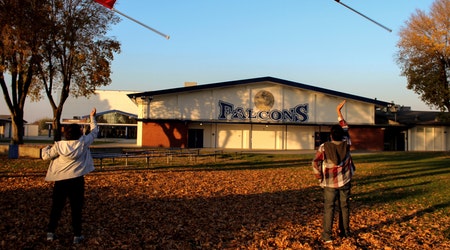Across the Industry
On Management
Healthy Lessons: Making Schools Safer
About 20 percent of the U.S. population — nearly 55 million people — spend their days in the nation’s elementary and secondary schools. The challenge: About one-half of the nation’s 115,000 schools have environments that can create health problems, such as those linked to indoor air quality (IAQ), according to the U.S. Environmental Protection Agency (EPA). Students face the greatest risk, principally because they are more susceptible to health problems created by pollutants than adults.
Maintenance and engineering managers have a range of resources at their disposal to improve the conditions for students, teachers, staff and visitors, including publications and software.
This spring, the EPA announced that it is supporting the University of Wisconsin’s efforts to help public schools with technical questions relating to the implementation of the IAQ Tools for Schools kit. The university fields and responds to inquiries that range from technical questions on HVAC systems and IAQ problems to non-technical questions on HVAC systems involving the kit and its implementation.
The hotline, (866) 837-3721, is staffed from 8 a.m. to 4:30 p.m.
An additional IAQ tool is the EPA’s School Advanced Ventilation Engineering software (SAVES). The two-part kit consists of a financial assessment software that calculates the fiscal characteristics of energy recovery ventilation (ERV) systems for schools, and an indoor humidity assessment tool. The latter helps schools assess moisture-control characteristics of ERV systems.
Managers can download SAVES software from the EPA’s Web site, and it soon will be available on CD. The software features templates so users who are knowledgeable about building ventilation systems can more quickly and easily get results without special training. For more information, visit IAQ Design Tools for Schools.
Finally, managers more often are called upon to provide assurances that their pest management contribute to safer and healthier schools and grounds. Toward this end, the EPA has published a new brochure, “Protecting Children in Schools from Pests and Pesticides,” to encourage school officials to consider integrated pest management.
The brochure provides resources to help schools learn more about integrated pest management (IPM) techniques and designing a management program to meet schools’ needs. School IPM programs employ common-sense strategies to reduce sources of food, water and shelter for pests in school buildings, including the judicious, careful use of pesticides where necessary. Visit Integrated Pest Management (IPM) in Schools for more information.
Regulatory Alert
ADA Update: Making Recreation Barrier-Free
Creating recreational facilities and play areas that are more accessible is the aim of the latest Access Board guidelines. Developed under the Americans with Disabilities Act, the new guidelines supplant current guidelines for creating accessible recreational facilities and choosing play area surfacing materials.
Guidelines for recreational facilities address amusement rides, boating facilities, fishing piers and docks, golf courses, sports facilities, swimming pools and spas, and how accessibility is achieved in new construction and alterations.
These guidelines now move to the Office of Management and Budget. Pending its approval, the guidelines will be published in the Federal Register.
Guidelines governing play area surfacing materials consider materials that cushion falls, yet are firm and stable enough for wheelchair use. Current findings indicate that engineered wood fiber is a popular surfacing material, though it may require extra maintenance to meet accessibility standards. Research is ongoing to improve the usability and maintenance of this material.
Tech Watch
Daylighting Boosts Classroom Performance
Elementary school students in a California district improved performance by 26 percent in reading and 20 percent in math when working in classrooms with the most overall daylighting, according to a new study.
Researchers with the Heschong Mahone Group studied more than 20,000 elementary students and 100 schools in districts at San Juan Capistrano, Calif.; Seattle; and Fort Collins, Colo. The study also found benefits for students in classrooms with the most window area and in classrooms with well-designed skylights.
In all three districts, the amount of daylight in the classroom was found to be strongly associated with better student performance. The epidemiological-style studies controlled for other potential influences on student test scores, such as student demographics, neighborhood effects and school curriculum styles.
Several factors might be responsible for the positive association between daylight and improved performance of students, says Lisa Heschong, a partner in the group.
Benefits of increased daylighting include:
- improved visibility due to higher illumination levels or better lighting quality.
- mental stimulation.
- improved mood, behavior or well-being.
The study also revealed that potential energy savings from daylighting can be substantial, reducing energy consumption by as much as 20 percent in schools and offices.
For more information on the study, visit Study detailed in June ASHRAE Journal: Daylight Tied to Improved Student Performance at ASHRAE Online's News & Events.
Related Topics:












